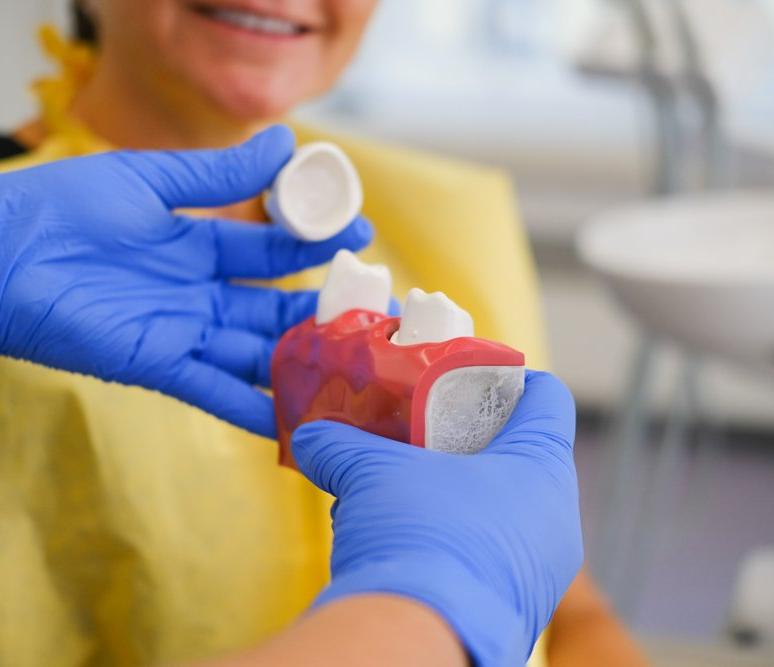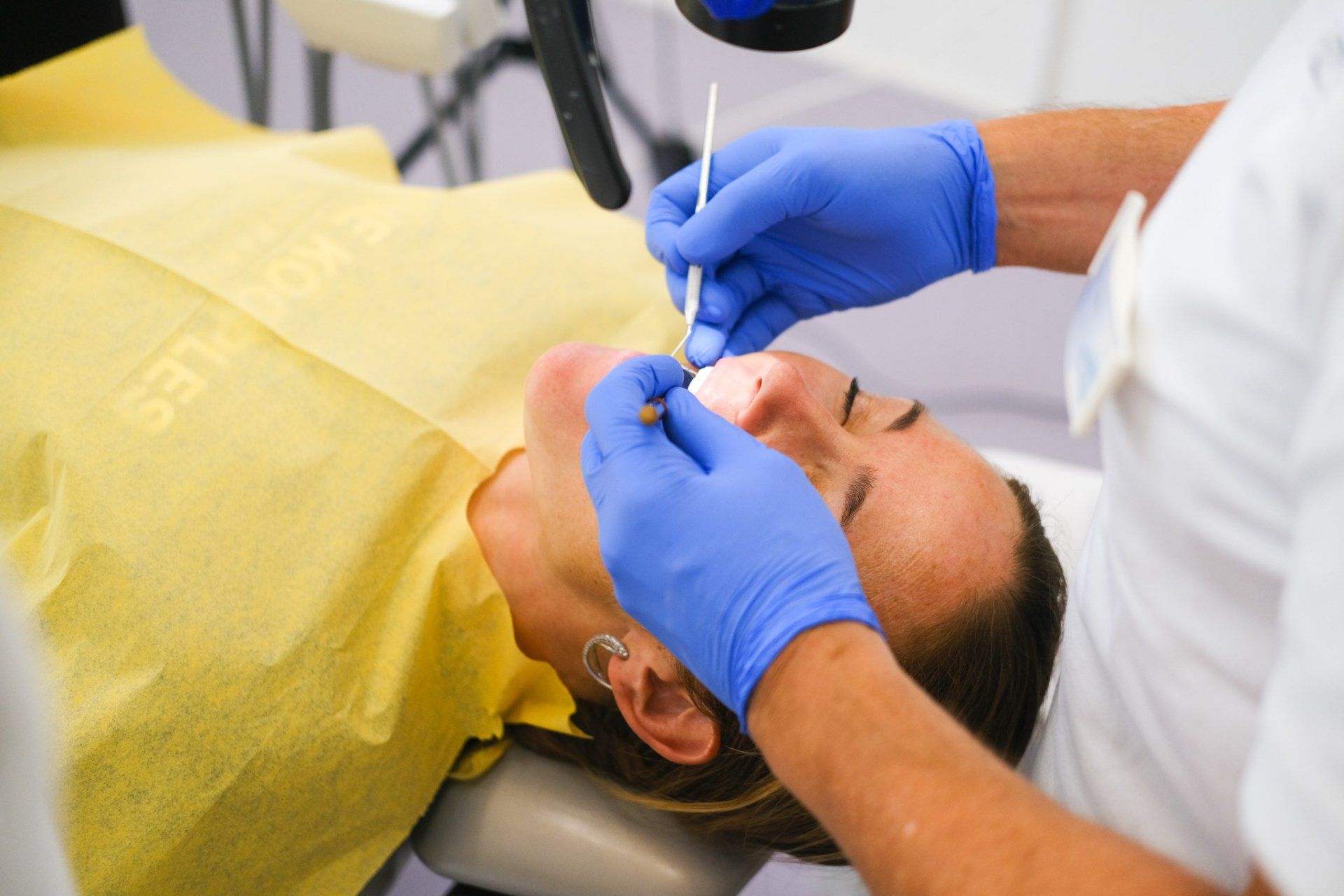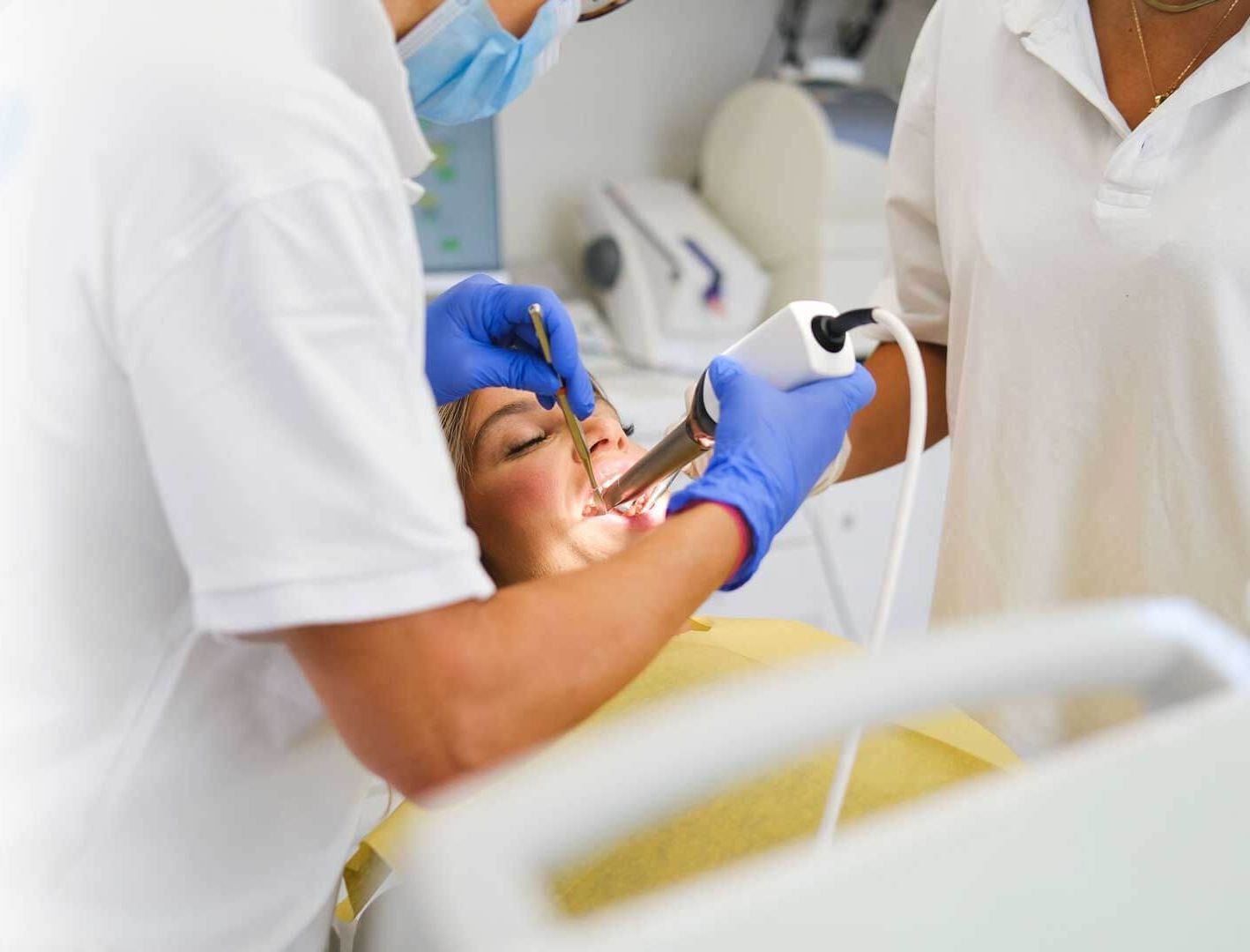Common dental diseases: Causes, symptoms and treatment methods
A healthy mouth is not just a question of aesthetics, but also plays a decisive role in general health. Diseases such as caries, periodontitis or tooth root inflammation are not only a cause of pain, but also a long-term burden on the entire body.
In this article, we take a closer look at the most common diseases, their causes, their symptoms and the modern treatment options available to us in dentistry today.
Structure of the tooth
Let's first take a look at the structure of our teeth to better understand the risks of dental disease. Each tooth consists of four main components:
- Tooth enamel (enamelum): This is the hard outer layer that protects the tooth from bacteria and acids.
- Dentin: This is the middle layer, which is softer than the enamel and contains the sensitive nerve canals.
- Pulp: This is the soft inner tissue of the tooth that contains nerves and blood vessels and is responsible for nourishing the tooth.
- Root element (cementum): A mineralized substance that covers the root of the tooth and provides anchorage to the periodontium.

Tooth decay
One of the most common diseases a dentist has to deal with is tooth decay.
Causes of caries
Caries is caused by a combination of bacteria, sugar and acids. Food debris that accumulates in the interdental spaces provides the bacteria with ideal conditions to grow. The bacteria produce acids there. These attack the tooth enamel and weaken the tooth structure.
Inadequate oral hygiene increases the risk of developing tooth decay, as plaque can spread unhindered on the teeth. The necks of the teeth and hard-to-reach areas such as the spaces between the teeth are particularly affected.
The formation of acids in the mouth is encouraged by sugary drinks and food, which can lead to the development of tooth decay. The risk can be minimized through regular dental care and the use of antibacterial mouthwashes.
Symptoms
Sensitivity: The tooth reacts more sensitively to hot, cold or sweet foods and drinks. The sensitivity may be slight at first, but increases over time. In severe cases, even a light touch can be enough to make the tooth hurt.
Hole in the tooth: Small black or brown spots on the enamel are the first signs of a hole in the tooth. Over time, this develops into a visible hole that can become larger. If it remains untreated, caries can penetrate into the pulp.
Toothache: Initially, the pain only occurs occasionally, but increases as the caries progresses. It becomes particularly severe when the inflammation reaches the pulp.
Treatment
Treatment at the dentist involves removing the diseased tooth substance and closing the hole with a filling. In severe cases, when caries has already reached the pulp, the tooth must be treated at the root. The best way to prevent tooth decay is through regular visits to the dentist, professional dental cleanings and proper dental care.
Periodontitis & inflammation of the gums
Gum inflammation and periodontitis are also widespread in the population. The disease is also known colloquially as periodontitis and can also have an impact on general health.
Causes of periodontitis
Periodontitis is a chronic inflammation of the periodontium caused by plaque and bacteria. The plaque can harden, leading to irritation and inflammation of the gums.
Periodontitis is favored by poor oral hygiene, smoking and a diet high in sugar. The risk of periodontitis can also be increased by pre-existing conditions such as diabetes. It carries the risk of cardiovascular disease.
If periodontitis is not treated, the inflammation progresses and spreads to deeper areas of the periodontium. This can lead to tooth loss in the long term if the jawbone recedes. It is one of the most common causes of tooth replacement
Symptoms
Bleeding gums: The gums often bleed even when lightly touched or when brushing the teeth. In the early stages, the bleeding is usually not painful, so the disease can often progress unnoticed. In later stages, the tendency to bleed increases.
Gum recession: Another symptom is the recession of the gums and the resulting exposure of the tooth necks. This leads to increased sensitivity to cold, heat or acidic drinks. Exposed tooth necks are also more susceptible to tooth decay.
Bad breath: A common symptom is persistent bad breath that persists despite good oral hygiene. The bacteria in the gum pockets produce sulphurous compounds that are responsible for the unpleasant odor.
Treatment
There are various options available in dentistry for the treatment of periodontitis. In the dental practice, plaque and tartar are removed from the tooth as part of a professional tooth cleaning. In severe cases, antibiotics must be administered or surgical measures taken to stabilize the periodontium.
Toothache due to inflammation of the tooth root
Tooth root inflammation is also a common cause of toothache. Below you will find an overview.

Causes of dental pulp inflammation
Untreated caries that spreads to the pulp usually causes inflammation of the tooth root (pulpitis). Bacteria are the trigger for an inflammatory reaction that affects the root of the tooth.
The pulp can also be damaged by injury, e.g. a crack in the tooth or a deep filling. In some cases, the inflammation is caused by constant strong pressure, for example, by grinding the teeth at night.
The inflammation can spread to the jawbone if it is not treated. In severe cases, there is a risk of an abscess or loss of the affected tooth.
Symptoms of tooth root inflammation
Pulsating toothache:
The pain often occurs suddenly and intensifies when the patient assumes certain positions (often lying down). It can radiate into the jaw or into the ear.
Swelling of the gums:
The gums around the affected tooth are red, swollen and sensitive to pressure. In advanced cases, pus may form, causing a visible thickening. An infection can also spread to the whole body.
Temperature sensitivity:
Both hot and cold foods and drinks trigger a sharp pain. In the early stages, the pain disappears after a few seconds. In later stages, the pain lasts longer.
Treatment
Root canal treatment is the most commonly used therapy for tooth root inflammation. The inflamed pulp is removed and the root of the tooth is cleaned. The cavity is then closed with a filling or crown. In some cases, antibiotics are necessary to contain a bacterial infection in the case of tooth root inflammation.
Preventing dental diseases
The best strategy to avoid problems with your teeth is consistent prevention. This includes thorough oral hygiene with a toothbrush and dental floss as well as regular visits to the dentist. The risk of tooth decay and periodontitis can be significantly reduced by avoiding liquids with a lot of sugar and eating a healthy diet. You should always make an appointment with a dentist as soon as you notice the first symptoms such as toothache, bleeding gums or bad breath. Early treatment can make a significant contribution to preventing major damage.

Tip: Regular professional teeth cleaning
Professional teeth cleaning is far more than just an aesthetic measure, it is the key to long-term dental health. The main causes of tooth decay, periodontitis and root canal treatment are eliminated by thoroughly removing plaque and tartar before they develop. The deeper plaque that builds up over time cannot be reached by home dental care itself.
Expensive and unpleasant dental treatments become almost superfluous with regular professional teeth cleaning. It also ensures naturally white teeth, fresh breath and a pleasant feeling in the mouth.
Dentists and dentists recommend having your teeth cleaned at least twice a year in order to have a radiant smile and healthy teeth well into old age. Make your oral health a priority!









